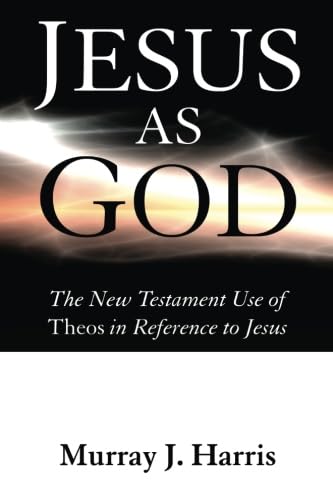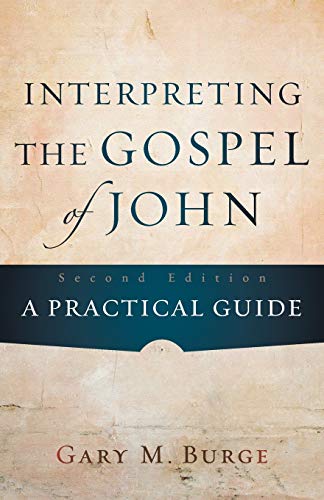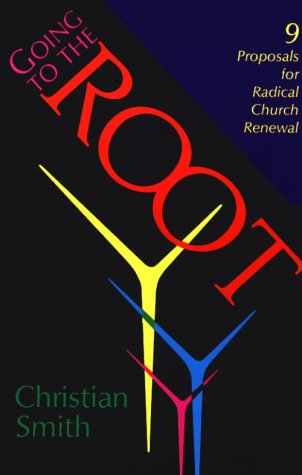Volume 19 - Issue 1
The Star of Bethlehem, drawing giraffes, and other good things: a selection of New Testament journal articles 1990–92
By David WenhamJesus said, ‘No one has arisen greater than John the Baptist’, but Christians have often not realized what a significant figure John was. Robert Webb’s book John the Baptizer and Prophet (JSOT, 1991) may help put this right, and in the journals there have been several interesting articles. Webb himself in JSNT 43 (1991), pp. 103–111, ‘The Activity of John the Baptist’s Expected Figure at the Threshing Floor’, argues that John is the thresher preparing the way for one who will take the separated wheat and chaff away to their respective destinies. Jerome Murphy O’Connor in NTS 36 (1990), pp. 359–374, ‘John the Baptist and Jesus: History and Hypotheses’, reflects on the geography of John’s ministry and (rather speculatively) on Jesus’ link with John. John’s influence continued in the period of the church: J. Ramsey Michaels in TB 42 (1991), pp. 245–260, ‘Paul and John the Baptist: An Odd Couple’, argues interestingly that Paul echoes John’s teaching. Martinus C. De Boer in NovT 33 (1991), pp. 326–346, ‘The Death of Jesus Christ and His Coming in the Flesh (1 John 4:2)’, suggests that the breakaway group from the church referred to in 1 John were emphasizing Jesus’ John-like baptizing ministry (‘water’), as described in John 3–4, but not his death (‘blood’). There is some reason also to think that there were followers of John who set John above Jesus, and that the NT is deliberately making it clear that John himself put Jesus way out in front (e.g. Jn. 1:20).
The prize for the most fascinating articles in this survey should probably go to Colin Humphreys, Professor of Material Science in Cambridge, who writes in TynB 43 (1992), pp. 31–56, on ‘The Star of Bethlehem, A Comet in 5 bc and the Date of Christ’s Birth’, and (with W.G. Waddington) in TynB 43, pp. 331–352, on ‘The Jewish Calendar, A Lunar Eclipse and the Date of Christ’s Crucifixion’. They date the crucifixion to 3 April ad33. Both articles have been published in earlier forms in scientific journals, and it is excellent to have well-documented and well-argued astronomical insights brought to bear on NT problems (though readers may like to note Roger Beckwith’s ‘Cautionary Notes on the Use of Calendars and Astronomy to Determine the Chronology of the Passion’ in J. Vardam and E.M. Yamauchi (eds.), Chronos Kairos Christos, Eisenbrauns, 1989, pp. 183–205). Other useful articles bearing on the history of Jesus include Barry C. McGing in CBQ 53 (1991), pp. 416–438, on ‘Pontius Pilate and the Sources’, and Akio Ito in JSNT 43 (1991), pp. 5–13, on ‘The Question of the Authenticity of the Ban on Swearing’ (Mt. 5:33–37).
The Last Supper comes in for attention by Deborah B. Carmichael in JSNT 42 (1991), pp. 45–67, ‘David Daube on Eucharist and the Passover Seder’. She revives the view of Daube and Eisler that the piece of unleavened bread broken off and set aside in the Jewish Passover and called the afikoman originally represented ‘a longed-for redeemer who had not yet appeared’. Jesus identified himself with that redeemer when he took the bread and spoke of his body. Carmichael doubts if the tradition of Jesus taking the cup and speaking of his death goes back to Jesus, but M. Casey in JTS 41 (1990), pp. 1–12, ‘The Original Aramaic Form of Jesus’ Interpretation of the Cup’, proposes an Aramaic original of Jesus’ words. In Churchman 105 (1991), pp. 246–260, ‘How Jesus Understood the Last Supper: A Parable of Action’, I offer an explanation of the Supper in its context which might possibly help bridge some of the divisions between different Christian approaches to the eucharist.
Still on the question of Jesus’ death, Daniel J. Antwi, in Interpretation 45 (1991), pp. 17–28, ‘Did Jesus Consider His Death to be an Atoning Sacrifice?’, argues helpfully that Jesus’ forgiveness of sins is to be linked to his coming up to Jerusalem, including to the temple: Jesus identified ‘his role with that of the hitherto given institution for atonement’. The death of Jesus is an atoning death not only in the synoptics but also in the fourth gospel, as Max Turner argues in EQ 61 (1990), pp. 99–122, ‘Atonement and the Death of Jesus in John: Some Questions to Bultmann and Forestell’. Turner also writes in NovT 33 (1991) on ‘The Spirit and the Power of Jesus’ Miracles in the Lucan Conception’. Other valuable articles on the gospels include those by Larry Hurtado in JSNT 40 (1990), pp. 15–32, on ‘The Gospel of Mark: Evolutionary or Revolutionary Document?’, commenting on the views of Burton Mack and W. Kelber, and by Peter Liu in EQ 64 (1992), pp. 291–317, ‘Did the Lucan Jesus Desire Voluntary Poverty?’. The answer is yes. For those interested in the synoptic problem, yet another view is offered by Ronald Huggins in NovT 34 (1992), pp. 1–22, ‘Matthean Posteriority: A preliminary Proposal’: he proposes the order Mark-Luke-Matthew. John Wenham follows up his book Redating Matthew, Mark and Luke (London: Hodder, 1990) with an article identifying Luke with one of the seventy in EQ63 (1991), pp. 3–44, ‘The Identification of Luke’.
Pauline scholars continue vigorously to debate Paul and the law. C.E.B. Cranfield responds to H. Räisänen’s view in JSNT 38 (1990), pp. 77–85, ‘Give a Dog a Bad Name. A Note on H. Räisänen’s Paul and the Law’, and to James Dunn in JSNT 43 (1991), pp. 89–101,’ “The Works of the Law” in the Epistle to the Romans’. Dunn replies in JSNT 46 (1992), pp. 99–117, ‘Yet Once More—“The Works of the Law”: A Response’. The exchange of views is courteous and helpful, with Dunn pointing out that he now sees ‘works of the law’ in a broader sense than his earlier writings may have suggested. Others addressing the same issue include Robert Sloan in NovT 33 (1991), pp. 35–60, ‘Paul and the Law: Why the Law Cannot Save’ (emphasizing Paul’s own experience of the law’s failure), Thomas R. Schreiner in NovT 33, pp. 217–244,’“Works of Law” in Paul’ (defending the view that Paul is opposing legalism), Frank Thielman in NTS 38 (1992), pp. 235–253, ‘The Coherence of Paul’s View of the Law: The Evidence of First Corinthians’. Cranfield in the first article nicely comments on the difficulty of offering a systematic account of Paul’s view of the law: our position ‘is a bit like that of a person who knows nothing about giraffes but has to try to draw a picture of one, having nothing to go on but someone’s sketch of a giraffe, of which much of the central area has been obliterated’.
Paul is not only interested in the law! 1 Corinthians provides lots of other important talking points. Thus Earle Ellis in Interpretation 44 (1990), pp. 132–144, ‘Soma in First Corinthians’, looks at Paul’s key concept of the body and at his ‘in Christ’ language, commenting helpfully on the sacraments in Paul. (In ExpT 104 (1992), pp. 45–47, ‘The Pastorals and Paul’, Ellis defends Pauline authenticity. Compare his Pauline Theology: Ministry and Society, Paternoster, 1989.) Margaret MacDonald in NTS 36 (1990), pp. 161–181, ‘Women Holy in Body and Spirit: the Social Setting of 1 Corinthians 7’, offers a number of interesting (and some speculative and less persuasive) observations about a much misunderstood chapter: she develops the idea that the problem in Corinth was a group of charismatically excited women, who thought that’ no male or female in Christ’ meant that they could act like men (e.g. worshipping with heads uncovered) and that they should remain celibate. They probably saw holiness in these terms, perhaps appealing to some of Jesus’ teaching (e.g. Lk. 18:29–30; 20:34–35). Paul opposes a view which he sees as likely to produce immortality and to be socially controversial. Bruce Winter addresses an important topic in TynB 41 (1990), pp. 209–226, ‘Theological and Ethical Responses to Religious Pluralism—1 Corinthians 8–10’. Also on 1 Corinthians, D. Instone Brewer in NTS 38 (1992), pp. 554–565, ‘1 Corinthians 9.9–11: A Literal Interpretation of “Do not muzzle the ox”’, argues that Paul operates with ‘the contemporary understanding of the term “ox” in the Law as a reference to all types of labourer, human and animal’.
As for Paul’s other letters, the view that Romans 11:25–27 suggests a ‘special’ way of salvation for Israel other than through faith in Jesus is reviewed and rejected by Reider Hvalvik in JSNT 38 (1990), pp. 87–107, ‘A “Sonderweg” for Israel. A Critical Examination of a Current Interpretation of Romans 11.25–27’. Brian Rapske in TynB 42 (1991), pp. 3–30, ‘The Importance of Helpers to the Imprisoned Paul in the Book of Acts’, asks and answers interesting questions about Paul’s companions. Paul Bowers in JSNT 44 (1991), pp. 89–111, ‘Church and Mission in Paul’, comes to the conclusion that ‘for Paul … active missionary outreach … was properly the role of select Christian believers … rather than the responsibility of Christian churches as churches’. Paul requires churches to support missionaries and to live in love and in a way that is attractive and welcoming to the outsider. Carey C. Newman in EQ 64 (1992), pp. 61–74, ‘Transforming Images of Paul: A Review Essay of Alan Segal, Paul the Convert’, examines critically Segal’s important reinterpretation of Paul’s conversion in terms of Jewish mystical experience.
Broader studies of NT theology include Paul Rainbow’s review of Larry Hurtado’s book One God, one Lord(Fortress, 1988) in NovT 33 (1991), pp. 78–91. Rainbow queries the currently fashionable emphasis on Jewish mediatorial figures as an explanation of Christology, and finds OT Messianic passages, like Psalm 110 and Daniel 7, to be more relevant. Charles Scobie has a trilogy of valuable articles on biblical theology in the TynB, the first two on questions of method in 42 (1991), pp. 31–60, 163–194, on ‘The Challenge of Biblical Theology’ and ‘The Structure of Biblical Theology’, the third applying the method in 43 (1992), pp. 283–306, ‘Israel and the Nations’.
Summary articles are often very useful to the student. Stephen Barton surveys recent work on the community/sociological context of the NT in JTS 43 (1992), pp. 399–427, ‘The Communal Dimension of Earliest Christianity’. Stanley Porter, author of the book Verbal Aspect in the Greek of the New Testament(Peter Lang, 1989), summarizes recent thinking about the Greek language in ExpT 103 (1992), pp. 202–208, ‘Keeping up with Recent Studies 17. Greek Language and Linguistics’. Is the aorist a background tense and the imperfect a foreground tense? Craig Blomberg, Themelios’s reviews editor and author of the significant Interpreting the Parables (IVP, 1990), distils some of his thinking in CBQ 53 (1991), pp. 50–78, ‘Interpreting the Parables of Jesus: Where are We and Where Do We Go from Here?’.
Abbreviations
CBQ Catholic Biblical Quarterly
EQ Evangelical Quarterly
ExpT Expository Times
JSNT Journal for the Study of the New Testament
JTS Journal of Theological Studies
NovT Novum Testamentum
NTS New Testament Studies
TynB Tyndale Bulletin
David Wenham
Wycliffe Hall






